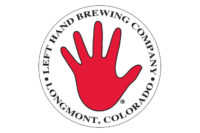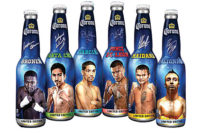On-premise dollar sales up as consumers trade up
Bars, restaurants turn to creative campaigns to boost consumption occassions

Despite a challenging economic year, the on-premise channel still is committed to offering consumers the opportunity to explore the latest alcohol beverage trends. “In 2013, the channel experienced softness as consumer confidence fluctuated due to economic uncertainties and consumers held back on spending somewhat,” says Donna Hood Crecca, senior director for Chicago-based Technomic Inc. “Overall volume was down, although dollars rose. Our research reveals fewer on-premise occasions in 2013 but interestingly more drinks per occasion.”
|
Noting consumers’ penchant for dining out, Mike Ginley, partner at NextLevel Marketing, Westport, Conn., says that although the channel was not immune to the economic and weather challenges within the past year, the market research firm’s latest consumer survey indicates that 79 percent of respondents reported that they are going to bars and restaurants as often or more often, and that 75 percent are spending as much or more during each occasion.
This survey could be indicative of sales trends for premium and super-premium brands. “Across beer, wine and spirits, products in the premium and super-premium price segments have fueled category growth as consumers continue to trade up to better-quality offerings,” Ginley explains.
Categorizing the trends
Part of this premiumization trend within on-premise stems from the changes taking place within the three alcohol beverage categories: beer, wine and spirits.
“Beer in restaurants and bars is a rapidly changing category,” Technomic’s Crecca says. “Craft beer and [hard] cider are taking tap handles from the major domestics, seasonals are challenging operators to manage their selections with flexibility, and imported beers are in demand by consumers — especially Mexican [beers].”
In the hard cider segment, Vermont Hard Cider Co., a division of C&C Group, released Woodchuck Hopped Apple, a draft-only cider. Originally released as part of the Woodchuck Cellar Series, the Middlebury, Vt.-based company decided to move the varietal to the channel as a year-round draft offering after its success as a limited-edition bottled release.
Although domestic beers still dominate sales in both on- and off-premise channels, the category has lost share to other alcohol categories, Technomic’s Crecca explains. “Beer as a category is relinquishing some occasions and volume to spirits and wine, as millennials are engaged with all three categories and are seeking flavor above all,” she says.
In particular, millennials are driving trends within the wine category. “Millennials are more in tune with wine than previous generations were at that age, and they’re gravitating toward red blends and sweeter profiles, as well as wines from emerging regions and ‘lifestyle’ wines — those without varietal or appellation specifications,” Crecca says.
However, wine trends are not limited to demo-graphics. Operators have helped evolve wine within the on-premise channel by keeping closer tabs on their wine list offerings.
“Operators are managing their lists more closely; many are reducing the size of their wine lists and inventories in order to reduce costs and be more nimble in bringing in new offerings to keep their programs fresh,” Crecca says.
NextLevel’s Ginley adds that wine volume sales reached record levels for 2013 with 326 million 9-liter cases due to SKU proliferation. “The growth has been driven by the release of new brands and line extensions that are appealing to millennials, helping to bring consumers into the wine category at an earlier age than prior generations,” he says. “Today’s consumers have a large variety of high-quality, contemporary wines available to them at reasonable prices.”
But wine isn’t the only category with a record-level year. Spirits reached sales of 211 million 9-liter cases in 2013, Ginley says. “The growth has been driven by flavor innovation across vodka, rum and whiskeys,” he says. “One of the category’s hottest segments has been American whiskey and specifically bourbons.”
Expanding on the flavor trends, Technomic’s Crecca says that sweet and spicy flavors are seeing the most traction through releases such as cinnamon and honey whiskeys, spiced rums, dessert-inspired vodkas, aged tequilas and an expansion of mixer flavors.
Driving sales
Beyond providing an increasing variety of options for consumers, on-premise operators also are developing creative campaigns to help drive sales.
“Today’s on-premise operators are turning to special promotions to drive value and traffic,” NextLevel’s Ginley says. “There has been a sharp increase in the number of establishments offering happy hour programs to drive traffic. We have also seen a rise in restaurant and bar loyalty programs to keep consumers coming back once they have been attracted in. Social media has played an increasing and major role in communicating promotional offers to consumers, and that trend will only increase in the years ahead.”
Red Robin Gourmet Burgers Inc., Greenwood Village, Colo., took happy hour a step further and enacted an all-day, every-day promotion at participating restaurants nationwide. The program offers 79 alcohol drink options priced at less than $5 each.
“We want our guests to enjoy an adult beverage on their time instead of being restricted to limited hours,” said Denny Marie Post, Red Robin’s senior vice president and chief marketing officer, in a statement. “With great drink prices, guests can say ‘yes’ to pairing a Red Robin burger with a beverage of their choice.”
According to Technomic’s Consumer Brand Metrics, overall satisfaction with a casual restaurant chain is higher when consumers order drinks, Crecca says. She also notes that hybrid drinks are gaining traction, citing Red Robin’s can-crafted beer cocktails program that launched last year.
Served in a limited-edition, reusable beer can, these beer and liquor combinations were available last summer in two styles: the Coors Light Can-Crafted Cocktail, which is a mixture of Coors Light beer, ginger liqueur and lemonade topped with fresh squeezed lemon, and the Blue Moon Can-Crafted Cocktail, which is a combination of Blue Moon Belgian White beer, Svedka Clementine vodka, orange juice and lime juice.
On-premise operators also are employing private label or exclusivity techniques, such as Buffalo Wild Wings’ Game Changer Ale, Crecca says. Last summer, Buffalo Wild Wings Inc. announced a partnership with Redhook Brewery to develop the new brew, which is exclusively available on-premise.
Where are consumers dining?
Although dollar and volume sales breakdowns indicate an embracement of premium and super-premium products, analysts note that consumers are not as strict with their establishment selections.
“In terms of drink sales, fine-dining and fast-casual restaurants, bars and nightclubs, and hotels are trending positively,” Technomic’s Crecca says. “Chains are expected to continue slightly underperforming the overall on-premise channel, but several concepts in the upscale portion of the segment are working to differentiate around beverage — Bonefish Grill, Fleming’s, etc. — and are making headway.”
She adds that traditional casual chains have faced their share of challenges but are focusing on adult beverage programs and new products to combat this.
NextLevel’s Ginley echoes similar sentiments: “The on-premise channel segments that have performed best in recent months have been fast-casual restaurants that are taking share from the traditional casual-dining restaurants from below and fine dining that is taking share from above. Casual-dining chains are also under greater pressure than ever from local independents that offer more convenient locations and more customized promotions.”
Looking for a reprint of this article?
From high-res PDFs to custom plaques, order your copy today!








